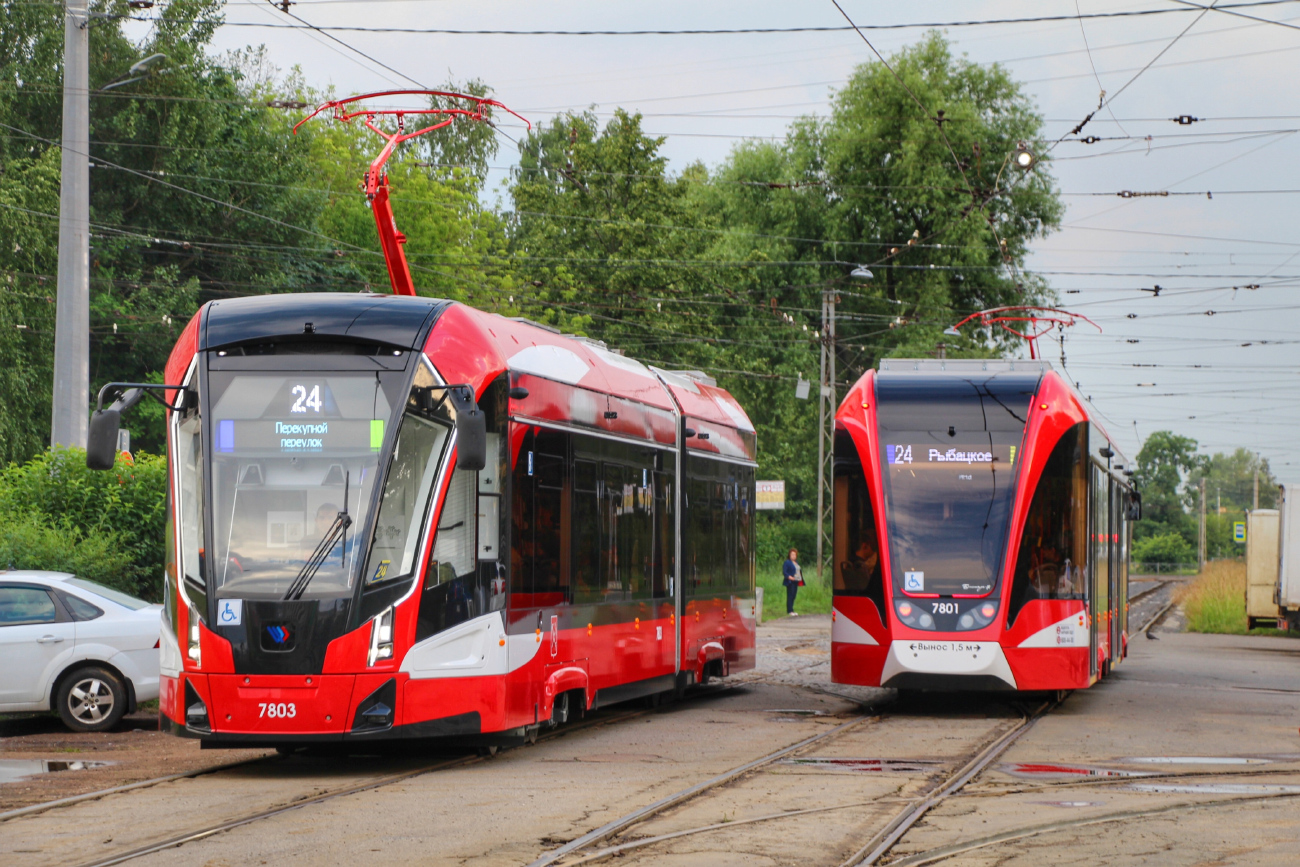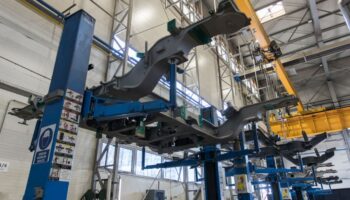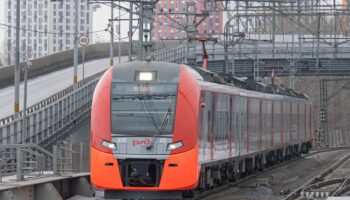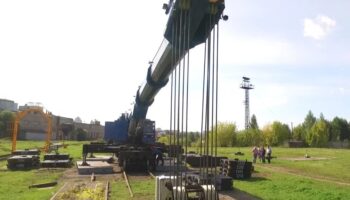Russia: The first two-section 71-923M “Bogatyr-M” trams manufactured by PС Transport Systems (PС TS) with the Cognitive Tram Pilot active automated driver assistance entered the city route served by tram depot No. 7. According to transphoto.org, the city has received 9 of these vehicles since May this year. As to the contract concluded in February, this year St. Petersburg should receive a total of 45 71-923M “Bogatyr-M” trams and 9 more units by the end of next year.
The new 71-923M “Bogatyr M” tram with an active driver assistance system was shown on July 13 to the Governor of St. Petersburg Alexander Beglov. According to PC TS, the set of sensors used in the Cognitive Tram Pilot consists of 2 cameras and 1 radar. The technology was developed by Cognitive Pilot, a joint venture of Sberbank and Cognitive Technologies.
The system can recognize various objects on the road: pedestrians, traffic lights, vehicles, road signs, and others. According to Galina Pankova, driver-mentor of tram depot No. 7, the system detects an obstacle 30 m away, and 5 m before it, the tram can stop itself if the system has identified the traffic situation as dangerous (for example, when there is an object on the rails) and the driver does not respond to this warning. In addition, it does not allow the driver to exceed the speed prescribed by the rules on a given route.
 The cabin of the updated 71-923M “Bogatyr M” tram. Source: PC TS
The cabin of the updated 71-923M “Bogatyr M” tram. Source: PC TS
CEO of Cognitive Pilot Olga Uskova said in a commentary to RBC Petersburg that the system is capable of ensuring safety in any weather and in any road conditions: night, rain, fog, snow, blinding light, etc. Cognitive Pilot tram has been tested since 2018 in Moscow and St. Petersburg, including public roads. In St. Petersburg, a tram with computer vision has already run in pilot mode on the route, where it entered full-fledged operation. According to Uskova, the system uses more than 70% of local components, and localization of equipment continues.
In an interview with TASS, Director of the Gorelektrotrans urban operator in St. Petersburg Denis Minkin speaking about the prospects for bringing the system to work in a completely autonomous mode, emphasized that first it is “needed to be taught to work, to download applications, to provide an interface”. Now the Cognitive Tram Pilot system is undergoing a test run, remembering the route taking into account stops, traffic lights and pedestrian crossings. “Within 5 years, there will be technical readiness for ATO trams. The actual one for metro cars is already there, since there is no traffic and obstacles on the rails. Another 5 years may be spent on legal issues. Within 10 years, android trains will run. First, they will be introduced in the metro, then in railway transport and then in trams”, Minkin notes.
The administration of St. Petersburg says that all new trams arriving in the city from 2022 will be equipped with Cognitive Tram Pilot systems. The contracted volume of deliveries for 2022-2023 is 192 trams. These supplies include 138 trams (77 two-section 71-923M “Bogatyr M” and 61 three-section 71-931M “Vityaz M”) by PC TS, the remaining 54 (12 two-section and 42 three-section in retro-style) will be produced by Uraltransmash (part of UVZ). At the same time, St. Petersburg plans to announce tenders for the purchase of other 404 trams in the upcoming years.













